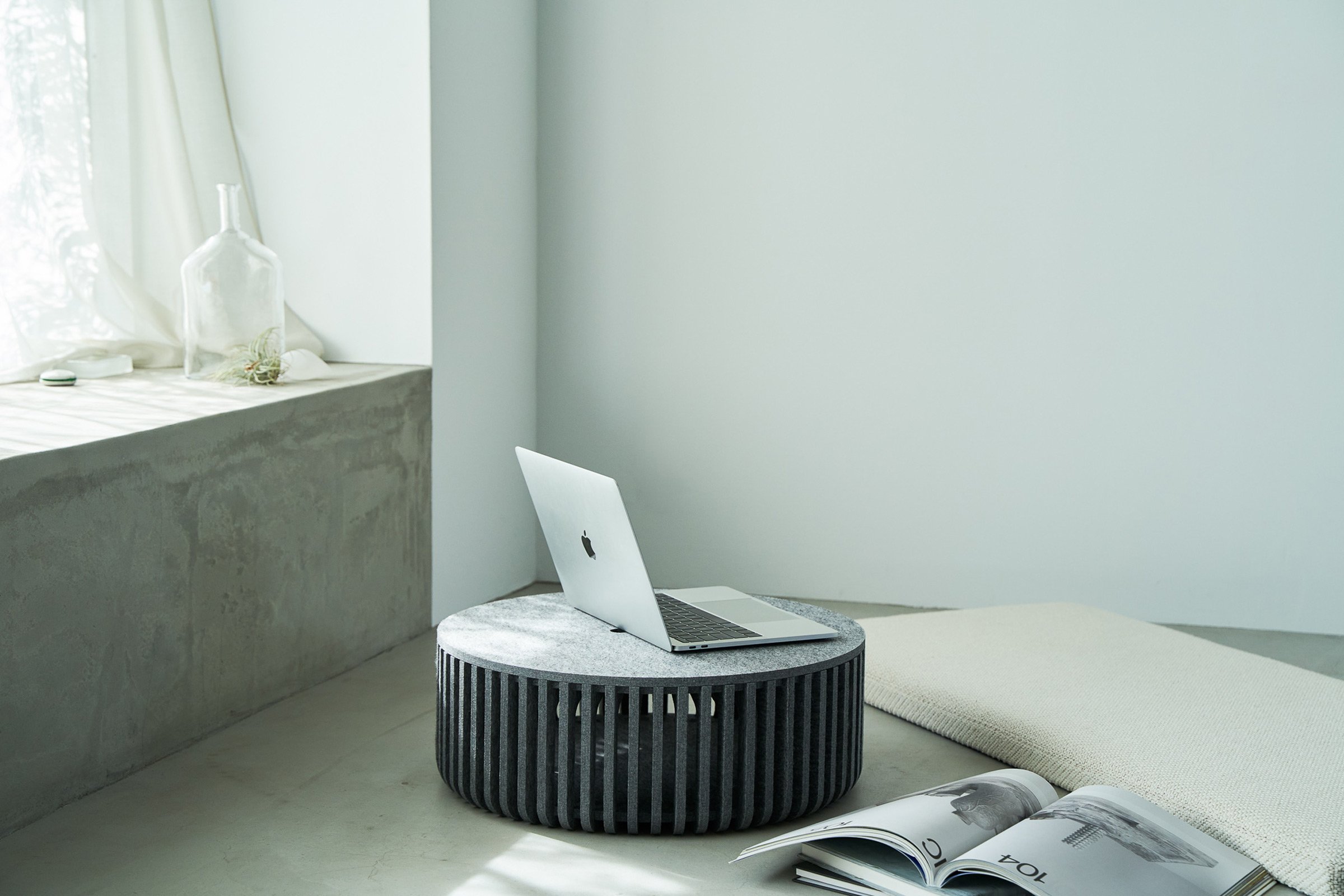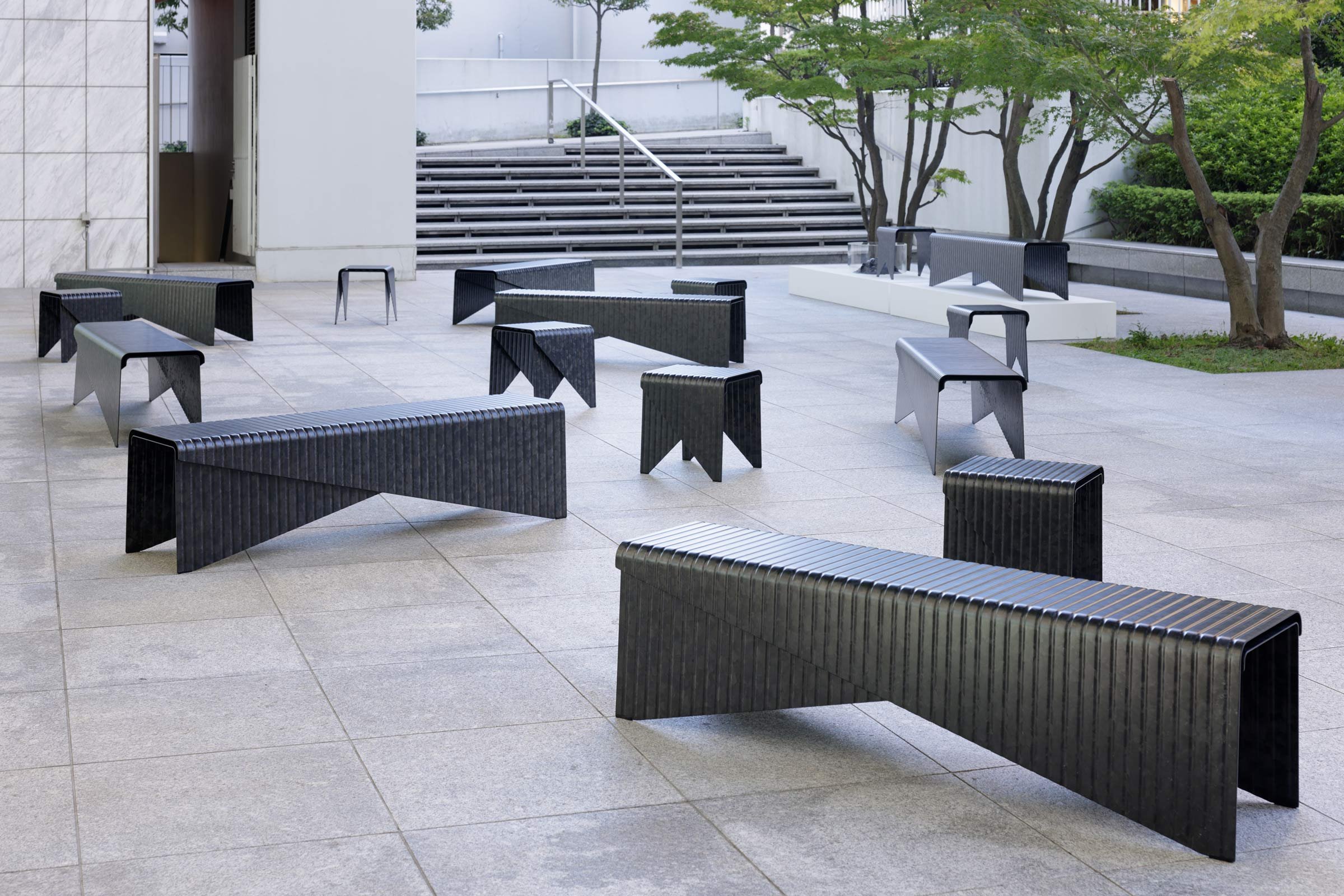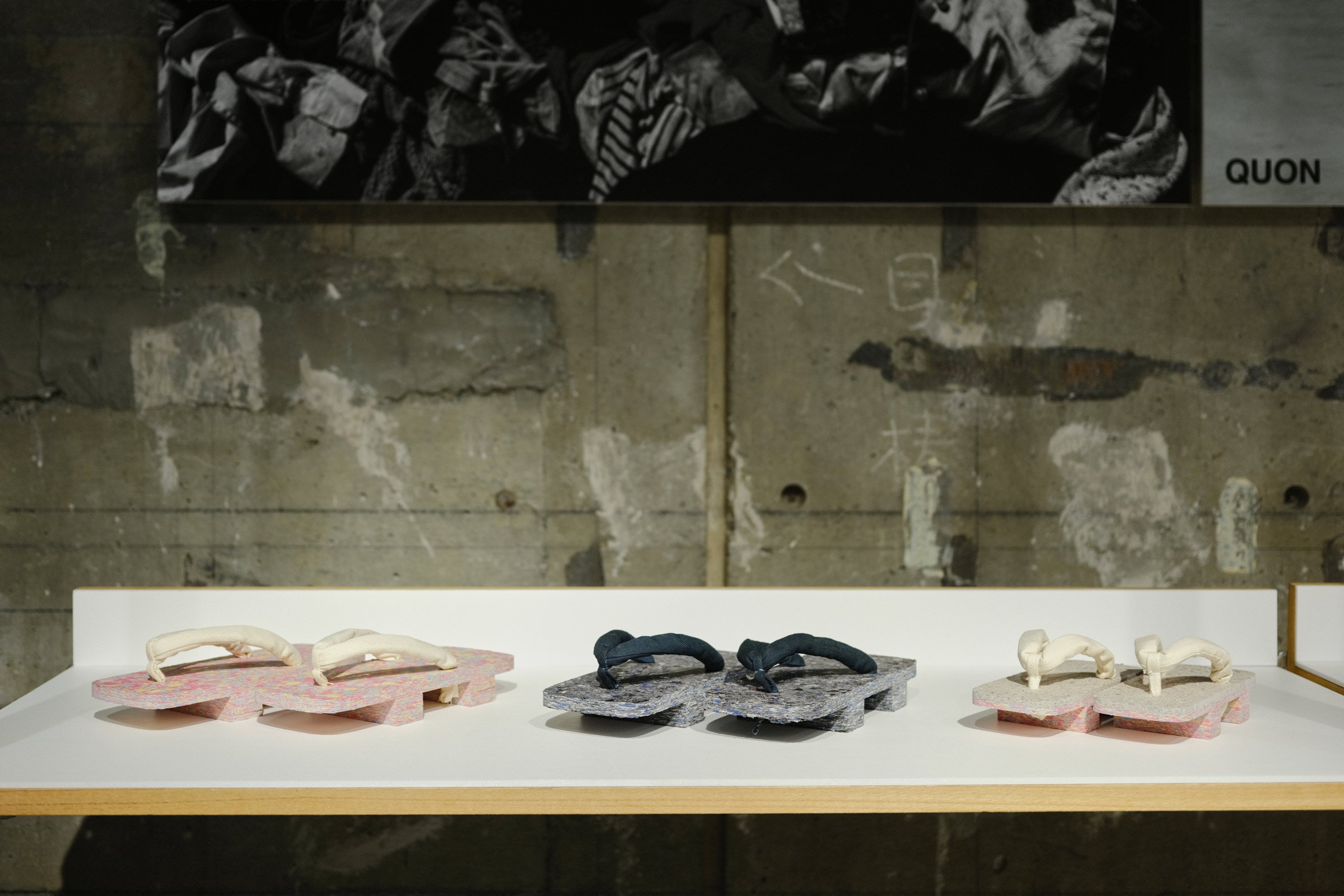DESIGNART Tokyo in Review
This October, DESIGNART Tokyo celebrated its sixth edition, bringing together nearly 100 exhibitions under the theme Together. Here we round up some of the highlights from the city-wide event
The 2022 edition of DESIGNART Tokyo was perfectly timed, as Japan opened its borders to foreign visitors after being closed due to pandemic-related restrictions for almost three years. Our editor-in-chief spent the week wandering around central Tokyo to find new and emerging talent in everyone’s favourite design destination. Here are some of her favourite discoveries this year.
Image by all day place
all day place x A Green
Directed by A Green’s founder and scent designer Megumi Fukatsu, FEEL HOTEL TOGETHER was an installation at the newly opened all day place hotel in Shibuya that combined all five senses in an interactive installation that married art and fragrance. A diverse group of next-generation designers and artists created site specific artworks that were displayed throughout the hotel for the duration of DESIGNART. Besides exhibits at the reception, there were specially staged rooms where lucky visitors could stay overnight.
Image by Nacasa & Partners
ambi & Studio Relight
In collaboration with Sawaya Co., these two creative studios produced a collection of work made from recycled glass from discarded fluorescent light bulbs. A series of vases, trays and objects were designed and produced using a sand-casting technique that highlights the unique colour and texture of the recycled glass.
Image by Nacasa & Partners
Ao.
Ao. (meaning ‘blue’ in Japanese) is a Tokyo-based furniture brand specialising in solid wood furniture dyed with natural indigo. Every piece is carefully processed by hand by one of Ao.’s craftsmen, making the most of locally sourced high-quality wood. For DESIGNART, the company presented Ao.Re:, a collection of pieces made from discarded wooden furniture and solid wood felled or sawed in Tokyo, creating a hybrid of old and new, made in collaboration with anova design and furniture design studio KOKKOK.
Image by Tomohiro Mazawa
Ariake x Neri&Hu Design and Research Office
Japanese furniture brand Ariake, led by creative director Gabriel Tan, has launched a new collection in collaboration with Shanghai-based duo neri&hu. Named Umu, the bedroom collection is partly inspired by a Chinese aesthetic philosophy of opposition and interdependence, the dichotomy of solid and void. The architects sought to bring together multiple functions into each piece, with various configurations to suit different spaces.
Image by Ryohei Maehara
Atsushi Shindo
A collaboration between Tokyo-based designer Atsushi Shindo and tile manufacturer CERAMIC OLIVE Inc., DIG-DUG is a series of textural decorative lights inspired by the age-old building material brick and the free-spirited rawness of the Japanese Mono-ha art movement. As Shindo explained, ‘I wanted the design to be as simple as possible because I wanted to focus on the soil itself; the core material of clay bricks. I wanted to retain a form I could touch and feel the dense, moist coldness but also warmth as well.’
Daisuke Yamamoto / DE:SIGN
A trained interior designer, Daisuke Yamamoto worked for the internationally renowned Masamichi Katayama at Wonderwall before founding his own practice, where his work is already garnering international recognition and awards. For DESIGNART, Yamamoto produced a series of chairs made from recycled construction material. The series, titled Flow, comprises 8 unique, and surprisingly comfortable, chairs.
Image by Nacasa & Partners
Image by Sota Kumagai
Junichi Ishigaki Design
After studying mechanical engineering and industrial design, Junichi Ishigaki founded his namesake studio. At DESIGNART and in Milan this year, Ishigaki exhibited a collection of portable modular furniture called Array Polar. A table, storage unit and stool in one, Array Polar is made from a hardened felt made from recycled fibres. Given its size and versatility, it’s the kind of product that is ideal for apartment living.
Image by Nacasa & Partners
Junichiro Yokota Studio
In collaboration with Mitsui Chemicals, Junichiro Yokota exhibited a range of outdoor benches made from TAFNEX™, a new material made from carbon fibre offcuts. The Layer bench is composed of two overlapping upper and lower sections, and each individual part has a shape that cannot stand on its own — only once combined do the two imperfect parts form a complete product.
Image by Nacasa & Partners
messagingleaving
Taiwanese designer Chialing Chang founded messagingleaving in 2021 after working with Japanese designer Jin Kuramoto. Chang works across art and design to create objects and sculptures with a poetic elegance. This year Chang exhibited in the UNDER30 showcase for the second time, presenting a collection of lights and mirrors that reveal her ongoing experimentation with brass and stainless steel.
Image by Nacasa & Partners
Nina Nomura
Tokyo-based Nina Nomura showed her work as part of the UNDER30 showcase at Hibiya Okuroji. Nomura exhibited a mise en scène titled Life through Holes, consisting of a dining table, chairs and a refrigerator, each entirely covered in minute holes. ‘I was fascinated by the way plastic products that seemed to be inorganic were given a new sense of life by harbouring cells of light,’ Nomura explained. ‘Petroleum, the raw material for plastics, was born from ancient plankton carcasses that were exposed to the heat and pressure of the earth over many years. The act of making a hole is to reveal the origin of this material and reproduce it as a mental landscape.’
Image by Nacasa & Partners
O’Tru no Trus
Okinawa-based artists Taiki Tanemura and Beni Ozaki work together as O’Tru no Trus. The pair combine flotsam and found objects from the beaches of Okinawa, such as bones, driftwood, shell and feathers, with intricate brass metalwork to create unique sculptural objects. For DESIGNART, the pair showed a collection of work at ARTIDA OUD’S The Another Museum in Shibuya, the perfect backdrop for their breathtaking creations.
Image by Nacasa & Partners
Sdanley Design Works
Tokyo-based Taiwanese designer Sdanley Shen showed a collection of works and research into the use of typically discarded and underutilised warped timber. Entitled The Bender, his collection shows how warped timber can still be functional and aesthetically pleasing, while also reducing waste.
Sohma Furutate Design
Tokyo-based Sohma Furutate showed his work as part of the UNDER30 showcase. MASS is a collection of sculptural furniture that exemplifies his approach and his respect for the innate qualities of the materials he chooses to work with. MASS, produced from thin sheets of metal that are sensual and appear ephemeral, encourage the viewer to see things differently.
Image by Nacasa & Partners
Image by Nacasa & Partners
Studio Karyn Lim
Also part of the UNDER30 showcase, Singapore-based designer Karyn Lim exhibited a special edition of her Transformation Bag. The Transformation Bags series is a play on geometry, where flat objects transform into sculptural volumes. The OMO Transformation Bag was produced in collaboration with Indonesian designer Fani Atmanti and wood carvers from Nias island and is made from upcycled native Afoa wood. Another special edition of the Transformation Bag was made using Fine Flute corrugated cardboard, a project supported by Japanese paper company TAKEO.
Image courtesy of Konel
Konel
The geta is a type of traditional Japanese footwear, typically made with a wooden base and cloth ‘thong’ and resembling a sandal. Konel has revolutionised the geta using a new material called Quon, a fibreboard made entirely from textile scraps, mostly from discarded clothing, otherwise headed for landfill. Japan produces more than 2 million tons of textile waste per year, less than 10% of which is recycled. This innovative collaboration is truly a marriage of tradition and innovation.
Studio POETIC CURIOSITY
Studio POETIC CURIOSITY was founded in 2020 by Yusuke Aonuma and Kensho Miyoshi, who met in Milan in 2015. The duo exhibited two concepts during DESIGNART this year, one of which was the interactive Wind Whisperer installation. The Wind Whisperer is a 3D-printed object reminiscent of an antique gramophone, with a mouthpiece included. The device senses your presence via light and motion sensors, and when you speak into the device, it ‘captures’ your thoughts and sends them off in a physical thought bubble to float away in the wind. Inspired by the anxiety and loneliness induced by the pandemic, the Wind Whisperer is both poetic and disarming.
Image by Mina Asaba
Image by Yunosuke Ishibashi
Studio SHOKO NARITA
Partners in work and life, designers Hirasawa Shoko and Narita Yuki set up Studio SHOKO NARITA in 2020. This year they showed the innovative new work Sky Seeing Apparatus. As they explained, ‘The origin of the kanji for sky (空) is the one for hole (穴). Ancient humans believed that gods swooped down from the large, empty expanse above their heads, making clouds and thunder come and go. The sky — devoid yet also full — has always been a beautiful thing that has bewildered human’s five senses. In this piece, we used a parabolic antenna to project the colour shift produced by innovative glass that possesses the same principles as the sky.’
Image courtesy of STUDIO YUMAKANO
STUDIO YUMAKANO
We first met Japanese designer Yuma Kano in Milan in 2019, when he showed his Rust Harvest series. This year at DESIGNART, Kano exhibited a chair and a table that show his experimentation with ForestBank™️, a material made from small trees, foliage, bark, seeds, soil and other organic matter otherwise considered worthless for construction or furniture making, mixed together with a water-based acrylic resin. The colouring and texture of the offcuts creates a unique pattern that works with the soft timber grain Kano selected, making for two noteworthy pieces.
Image by Yu Matsuda
UO
Hamamatsu-based UO, founded by Yu Matsuda and Yuichiro Tani, presented the Omotesando Replica Project at Omotesando Hills. The designers took a single twig from one of the zelkova trees that line Tokyo’s famous Omotesando boulevard, just 60 metres from the exhibition site, and made 2,000 copies of it using 3D-printing technology. The installation is made entirely of that single twig shape, twisted and turned to create a geometric composition.
Of the concept behind the installation, the designers explained that ‘No other form of the same twig exists, and if someone had stepped on it before or after the timing of its discovery, it might have changed to a different form. In a sense, this branch is the product of chance, formed from the only intersection of infinite space and time. By duplicating it 2,000 times, arranging it and creating a large sculpture, we wondered if we could create an effect like a magnifying glass that would clarify the uniqueness of its existence.’
Image courtesy of Yuji Okitsu
Yuji Okitsu
Tokyo-based designer Yuji Okitsu first showed his FOCUS light in Milan in 2018, and since then the pendant has been refined and commercialised by the French lighting brand DCWéditions. The mobile-style structure consists of a series of thin, round lenses and a rim of LED lights set in a minimal frame. This clever design means the lenses are continually creating new views and reframing the surrounding scenery and responding to subtle ambient changes in the space, making the pendant not just a light, but also an interesting interior object.
Text / Suzy Annetta




















